【今日TED精读】:为什么大米如此受欢迎?|Why is rice so popular?
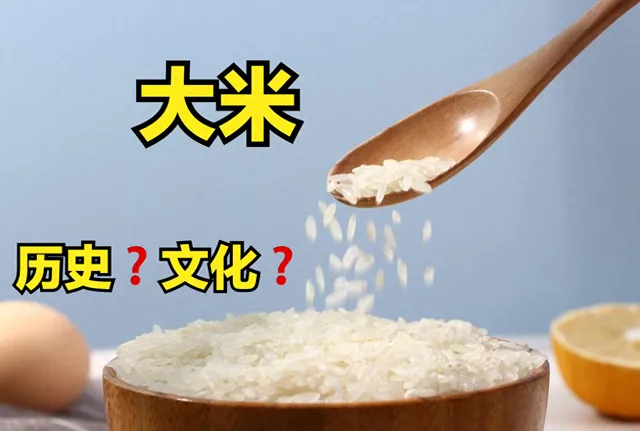
大米在世界饮食中扮演着重要的角色,如果把全球每年消耗的大米放在一边,人类都会被其沉甸甸的份量所压倒。让我们一起探索大米的历史和文化,了解它是如何成为全球食物中的主角的。
|
本篇TED精读 |
详情 |
|
TED视频 (中英文字幕) |
4min 37s |
|
总结重点词汇词组 |
10个 |
|
小习题 |
1道 |

01
TED视频 (中英文字幕)
更换封
02
原文阅读(附加翻译)
If you were to place all the rice consumed each year on one side of a scale, and every person in the world on the other, the scale would tip heavily towards rice's favor.
如果你把每年消耗的所有大米放在天平的一侧,而世界上的每个人都放在另一侧,那么天平会严重向大米倾斜
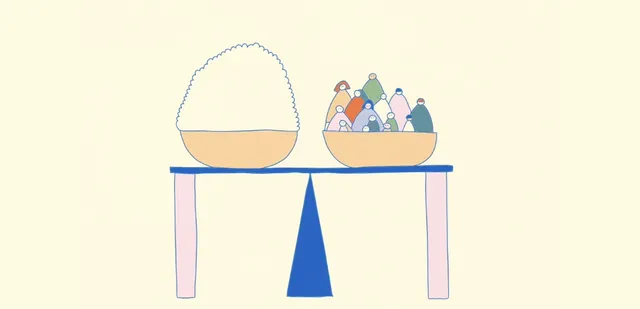
This beloved crop contributes over 20% of the calories consumed by humans each year.
这种深受人们喜爱的作物每年贡献的热量占人类消耗的热量的 20% 以上。
Korean bibimbap , Nigerian jollof, Indian biryani , Spanish paella , and countless other culinary masterpieces all begin with rice.
韩国拌饭、尼日利亚乔洛夫、印度比尔亚尼菜、西班牙海鲜饭以及无数其他烹饪杰作都始于大米。
So how did this humble grain end up in so many cuisines ?
那么这种不起眼的谷物是如何出现在这么多美食中的呢?
The roots of rice go back thousands of years to when early farmers in Asia, Africa, and South America each independently domesticated the crop.
水稻的根源可以追溯到数千年前,当时亚洲、非洲和南美洲的早期农民各自独立驯化了水稻。
First came Asian rice, which many plant geneticists believe originated in what's now China.
首先是亚洲水稻,许多植物遗传学家认为它起源于现在的中国。
Over 10,000 years ago, nomadic hunters in the region began gathering and eating seeds from aweedy grass.
一万多年前,该地区的游牧猎人开始采集并食用杂草中的种子。
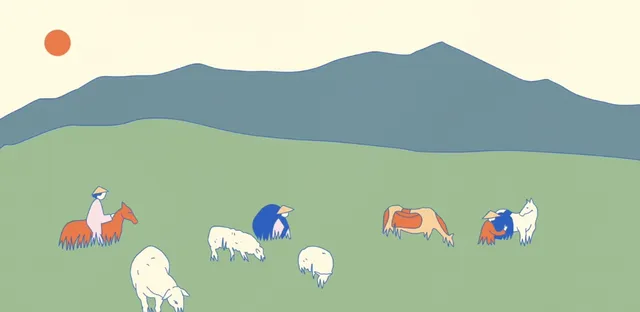
Then, around 9,000 years ago, they started planting these seeds, prompting nomadic hunters to settle into farming communities.
然后, 大约 9000 年前, 他们开始种植这些种子,促使游牧猎人定居到农业社区。
With each harvest, growers selected and replanted seeds from the rice plants that pleased them most— like those with bigger and more plentiful grains or aromatic flavors.
每次收获时,种植者都会从最令他们满意的稻株中选择并重新种植种子,比如那些颗粒更大、更丰富或味道更芳香的稻种。
Over millennia, thousands of varieties of Asian rice emerged.
几千年来,出现了数千种亚洲稻米品种。

A relative of the same weedy grass was also domesticated in Africa around 3,000 years ago.
大约 3000 年前,同一种杂草的近亲也在非洲被驯化。
Today, its growth is mostly limited to West Africa.
今天,它的增长主要局限于西非。
South American growers also domesticated rice around 4,000 years ago, though the crop was lostafter the arrival of Europeans.
大约 4000 年前, 南美种植者也驯化了水稻,但这种作物在欧洲人到来后就消失了。
Asian rice, however, spread widely, and is now a cornerstone of diet and culture in Asia and beyond.
然而,亚洲稻米传播广泛,现已成为亚洲及其他地区饮食和文化的基石。
In India and Nepal, many Hindus mark an infant's transition to solid foods with a ceremony known as Annaprashan, where the baby tastes rice for the first time.
在印度和尼泊尔, 许多印度教徒会举行一种被称为「Annaprashan」 的仪式来纪念婴儿向固体食物的过渡,婴儿在仪式上第一次品尝米饭。
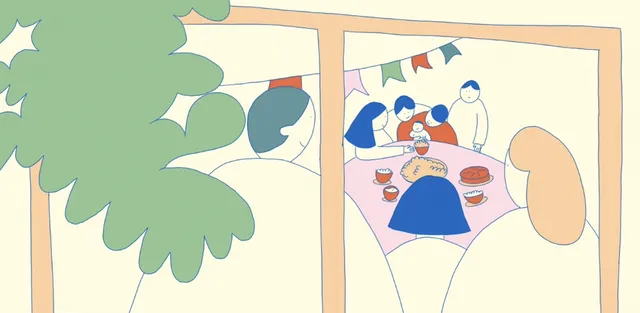
in Japan, rice is so central to diets that the word "gohan" means both "cooked rice" and "meal." Theglobal expansion of rice cultivation was only possible because the plant can grow in many climates— from tropical to temperate.
在日本,大米是饮食的核心,"gohan"一词既意味着"煮熟的米饭",也意味着"饭"。水稻种植的全球扩张之所以成为可能,是因为这种植物可以在许多气候条件下生长 - 从热带到温带。
As a semi- aquatic plant, rice happily grows in submerged soils.
作为一种半水生植物,水稻在淹没的土壤中快乐地生长。
Many other crops can't survive in standing water because their root cells rely on air within soil toaccess oxygen.
许多其他作物无法在死水中生存,因为它们的根细胞依赖土壤中的空气来获取氧气。
But rice plants have air channels in their roots that allow oxygen to travel from the leaves and stemsto the submerged tissues.
但水稻的根部有空气通道,可以让氧气从叶子和茎输送到水下的组织。
Traditionally, growers plant rice in paddy fields— flat land submerged under as much as 10centimeters of water throughout the growing season.
传统上,种植者在稻田中种植水稻,稻田是在整个生长季节被淹没在 10 厘米深水下的平坦土地。
This practice returns high yields since many competing weeds can't hack it in the aquaticenvironment.
这种做法可以获得高产量,因为许多竞争杂草无法在水生环境中对其进行砍伐。
But the technique is also water intensive.
但该技术也需要大量用水。
Rice covers 11% of global cropland, but uses over a third of the world's irrigation water.
水稻覆盖了全球农田的 11%,但使用了世界灌溉用水的三分之一以上。
This form of rice production also pumps out a surprising amount of greenhouse gas emissions.
这种水稻生产方式也产生了惊人的温室气体排放。
Flooded fields are the perfect breeding grounds for microorganisms known as methanogens.
被淹没的田地是被称为产甲烷菌的微生物的完美繁殖地。

These microscopic lifeforms thrive in environments lacking oxygen, because they evolved when theEarth contained little of this gas.
这些微小的生命形式在缺氧的环境中繁衍生息,因为它们是在地球上几乎没有氧气的情况下进化而来的。
Methanogens are the only organisms known to produce methane— a greenhouse gas 25 times more potent than carbon dioxide at trapping heat in the atmosphere.
产甲烷菌是唯一已知能产生甲烷的生物体,甲烷是一种温室气体,其吸收大气热量的能力比二氧化碳强 25 倍。
Cows, for example, are infamous for burping out methane due to methanogens in their stomachs.
例如,牛因胃中的产甲烷菌而打嗝而出甲烷而臭名昭著。
In a flooded paddy field, methanogens set to work eating away at organic material in the submerged soil and multiplying rapidly, all the while releasing copious amounts of methane.
在被洪水淹没的稻田中, 产甲烷菌开始侵蚀淹没土壤中的有机物质并迅速繁殖,同时释放大量甲烷。
The result: rice cultivation contributes around 12% of human-caused methane emissions each year.
结果:水稻种植每年贡献了约12%的人为甲烷排放。
But there's good news.
但有好消息。
Rice doesn't actually need to grow in continuously flooded paddies.
水稻实际上不需要在持续淹没的稻田中生长。
Researchers and growers are exploring water management strategies that can cut the methane whilekeeping the yield.
研究人员和种植者正在探索水管理策略,以减少甲烷排放,同时保持产量。
One promising technique is known as alternate wetting and drying.
一种有前途的技术被称为交替润湿和干燥。
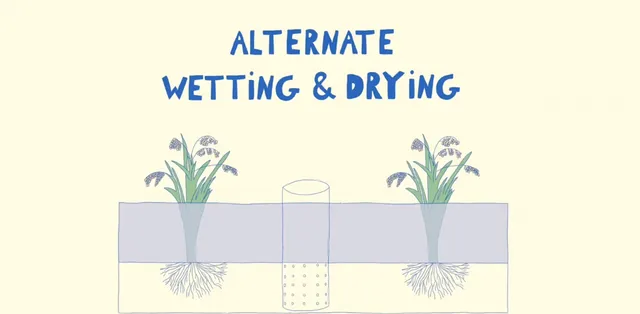
Growers periodically let the water level drop, which keeps methanogen growth in check.
种植者定期让水位下降,从而抑制甲烷菌的生长。
Alternate wetting and drying can cut water use by 30% and methane emissions by 30 to 70% without impacting yield.
交替润湿和干燥可以将用水量减少30%,甲烷排放量减少30%至70%,而不会影响产量。
Greenhouse gases come from many— sometimes unexpected— places.
温室气体来自许多地方——有时是意想不到的地方。
Making rice growing more sustainable is just one of the many challenges we'll need to face to avoidcatastrophic warming.
让水稻种植更加可持续只是我们避免灾难性变暖需要面对的众多挑战之一。
Today, many rice growers still flood fields all season long.
如今,许多稻农仍然在整个季节淹没田地。
Changing millennia -old practices requires a major mindset shift.
改变几千年的做法需要重大的思维转变。
But going against the grain could be just what we need to keep our planet healthy and our bowls full.
但逆境可能正是我们保持地球健康和我们的碗饱所需要的。
03
重点词汇词组
重点单词:
1. rice /raɪs/: 大米
2. cultivation /ˌkʌltɪˈveɪʃən/: 种植
3. domestication /dəˌmɛstɪˈkeɪʃən/: 驯化
4. sustainable /səˈsteɪnəbl/: 可持续的
5. methane /ˈmɛθeɪn/: 甲烷
重点词组:
1. culinary masterpieces: 美食杰作
2. water management: 水资源管理
3. greenhouse gas emissions: 温室气体排放
4. alternate wetting and drying: 交替浸湿和干燥
5. sustainable production: 可持续生产
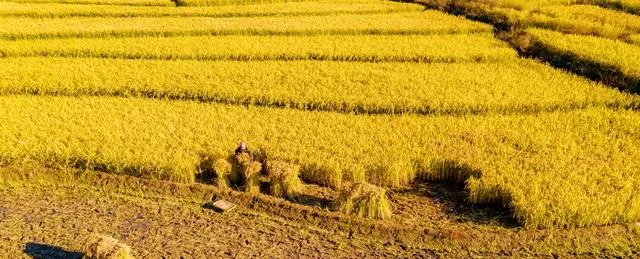
04
小习题
1. Rice is a __________ crop that provides over 20% of the calories consumed by humans each year.
a) Neglected
b) Beloved
c) Abandoned
d) Rejected
答案解析:
- b) beloved 解释: 这里用"beloved"表示大米是备受喜爱的作物,因为它在人类饮食中占据重要地位。
>>>> END <<<<
[微风]一篇不过瘾?阅读更多如下:











